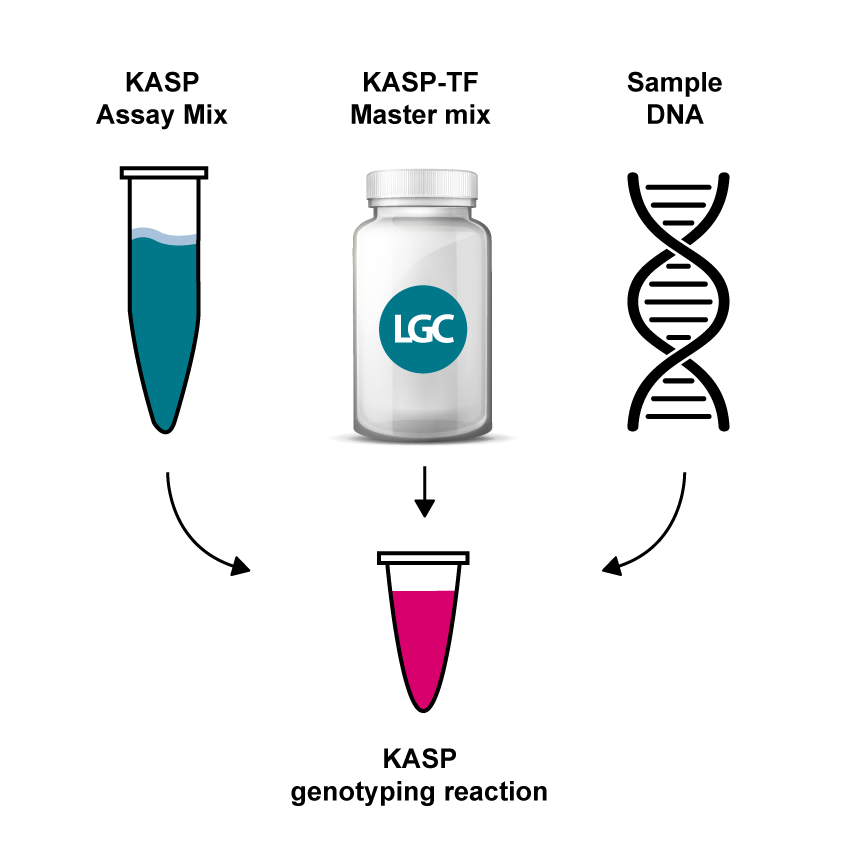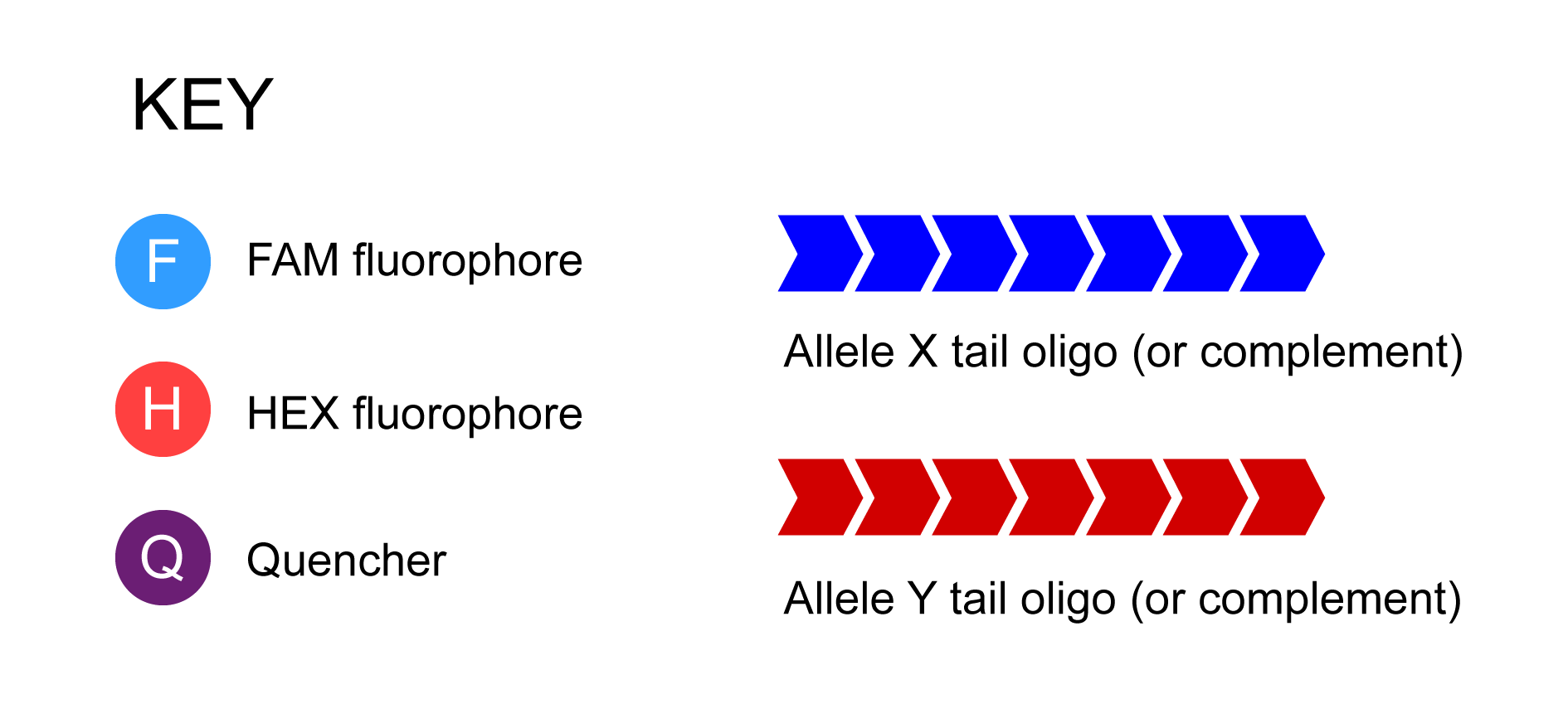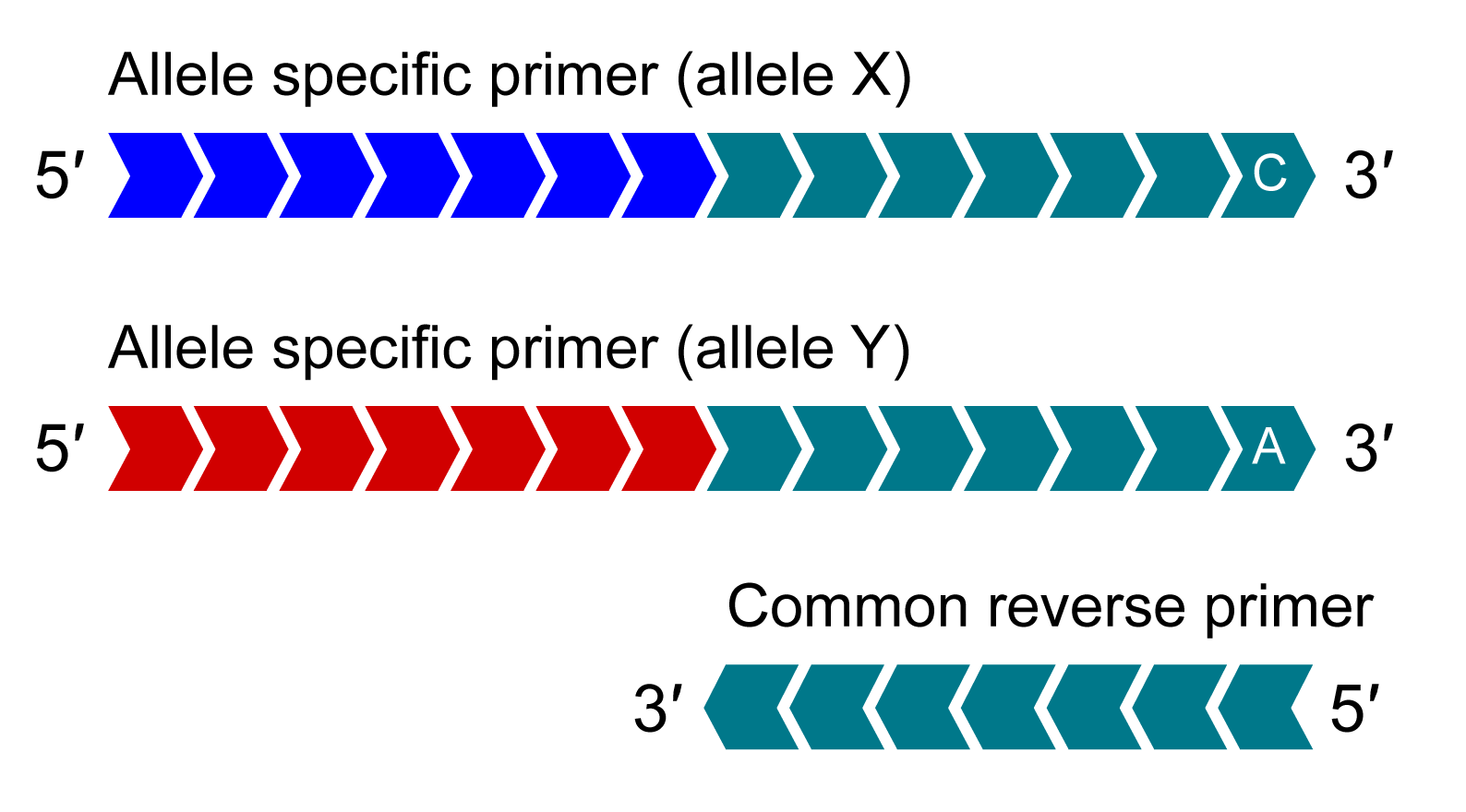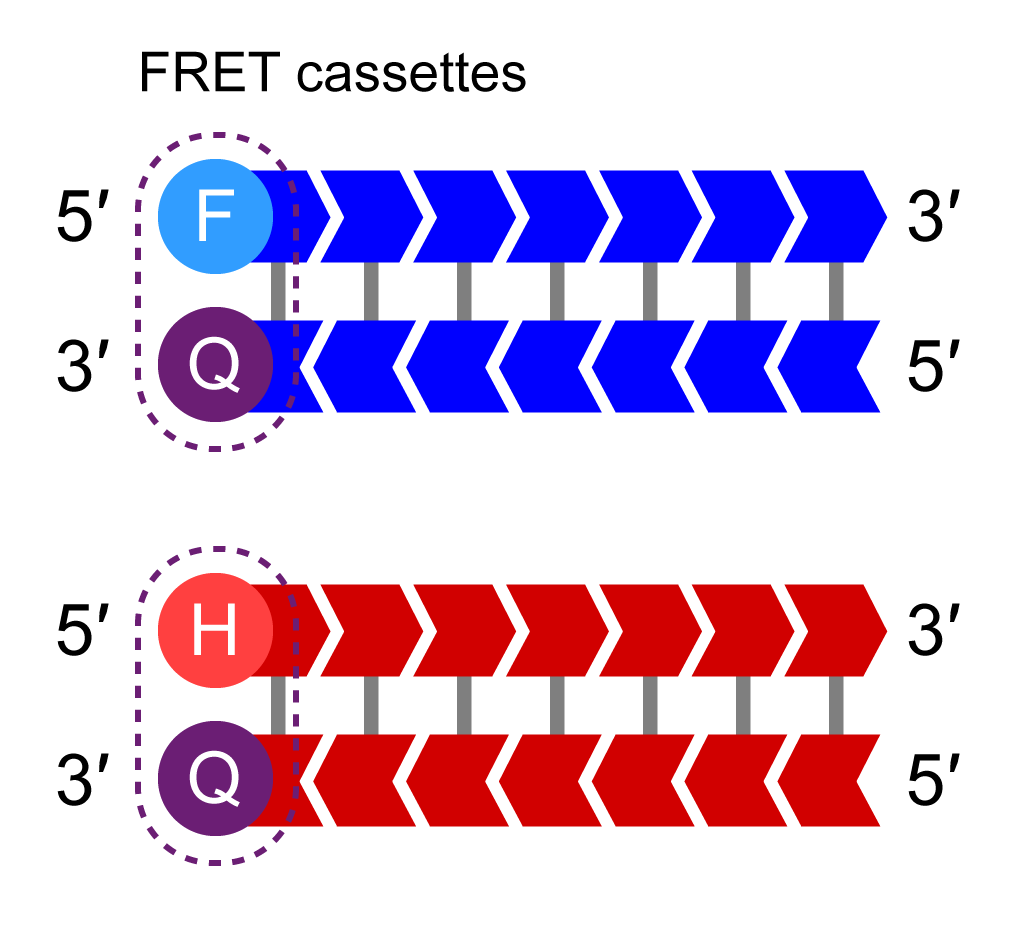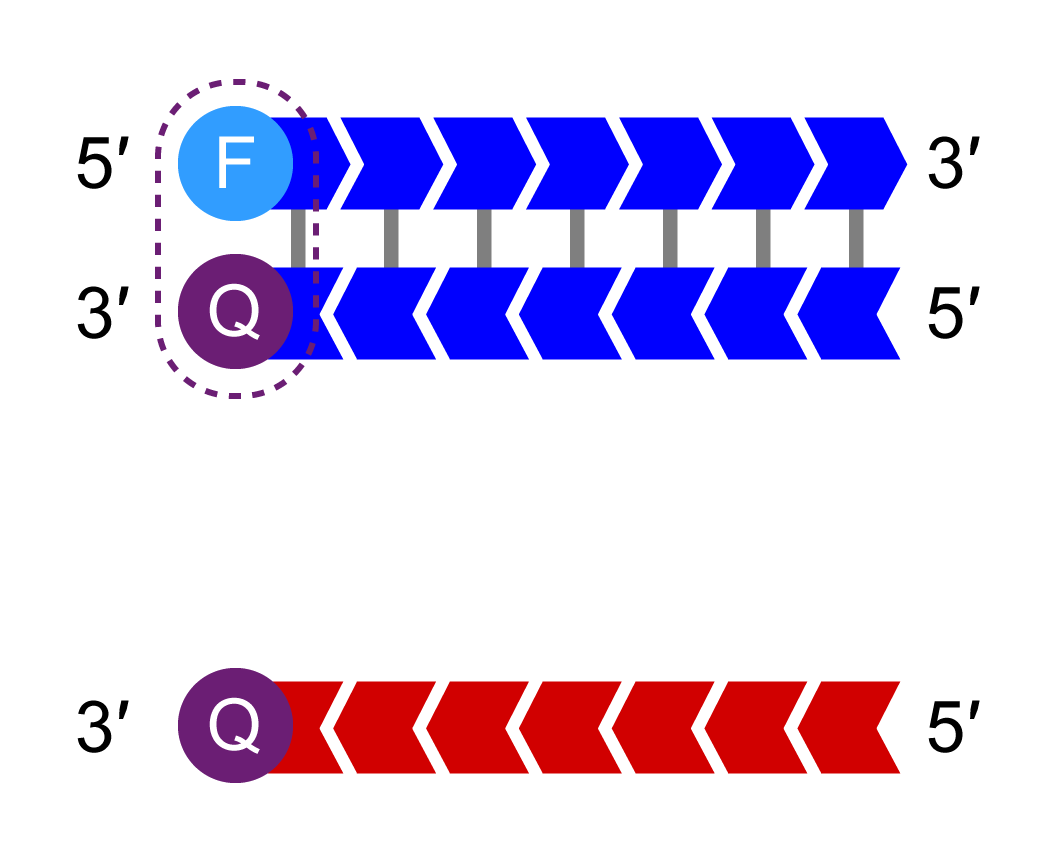Signal generation
The HEX-labelled oligo binds to the new complementary tail sequence and is no longer quenched.
IIn additional rounds of PCR, levels of allele-specific tail sequence increase. The fluorophore-labelled part of the FRET cassette is complementary to new tail sequences and binds to these sequences, releasing the fluorophore from the quencher to generate a fluorescent signal. In this example, allele-Y (HEX) signal is generated and the fluorophore for the non-incorporated X-allele (FAM) remains quenched.
Bi-allelic discrimination is achieved through the competitive binding of the two allele-specific forward primers. If the genotype at a given SNP is homozygous, only one of the two possible fluorescent signals will be generated. If the genotype is heterozygous, a mixed fluorescent signal will be generated.

